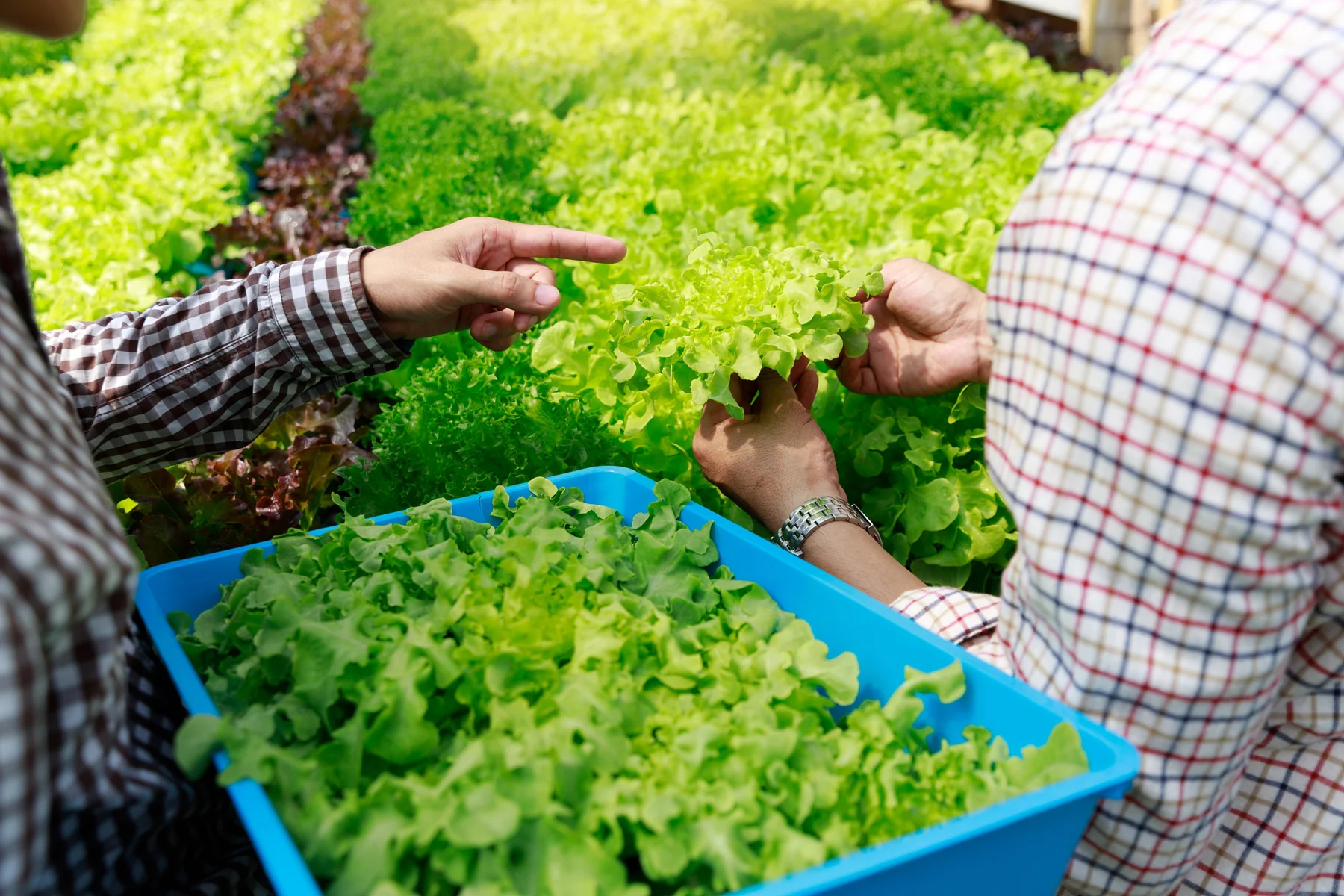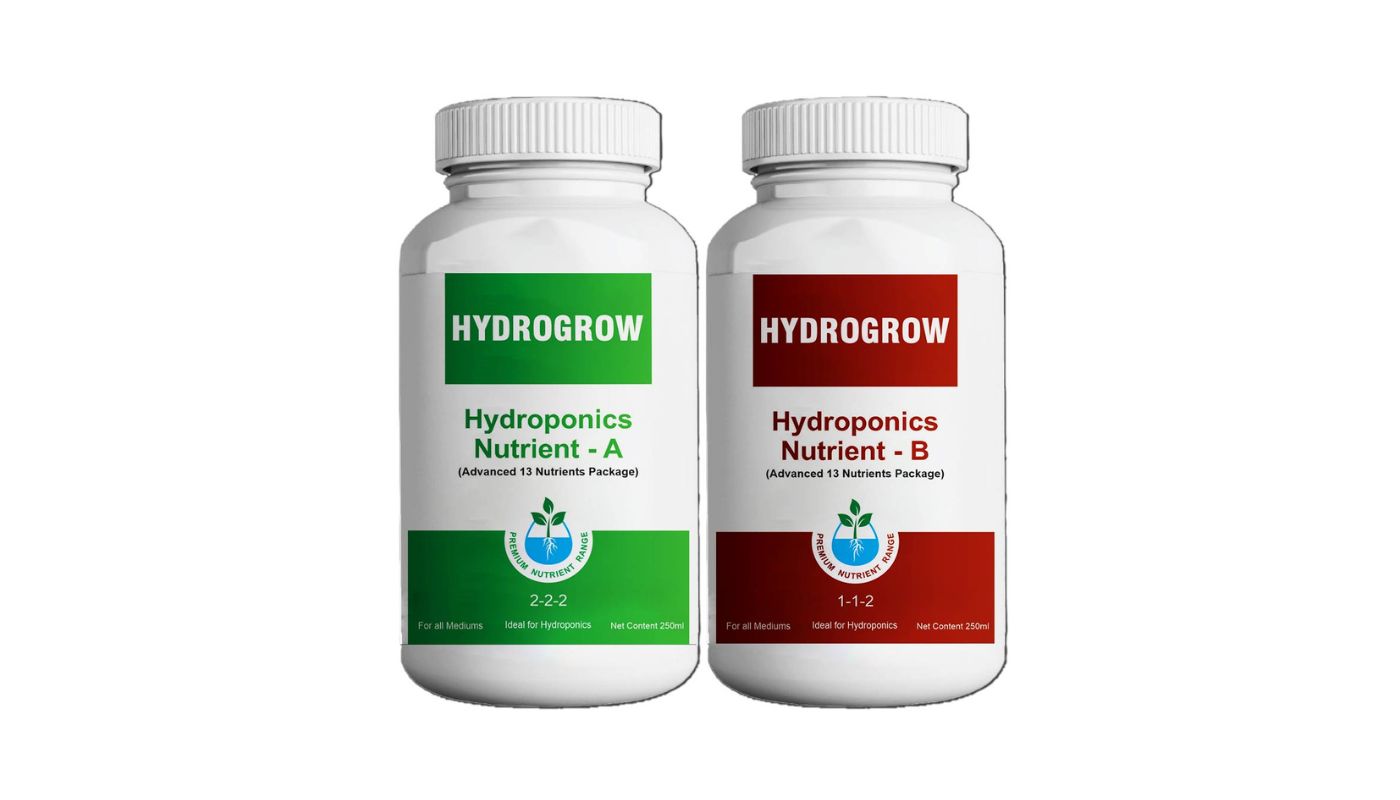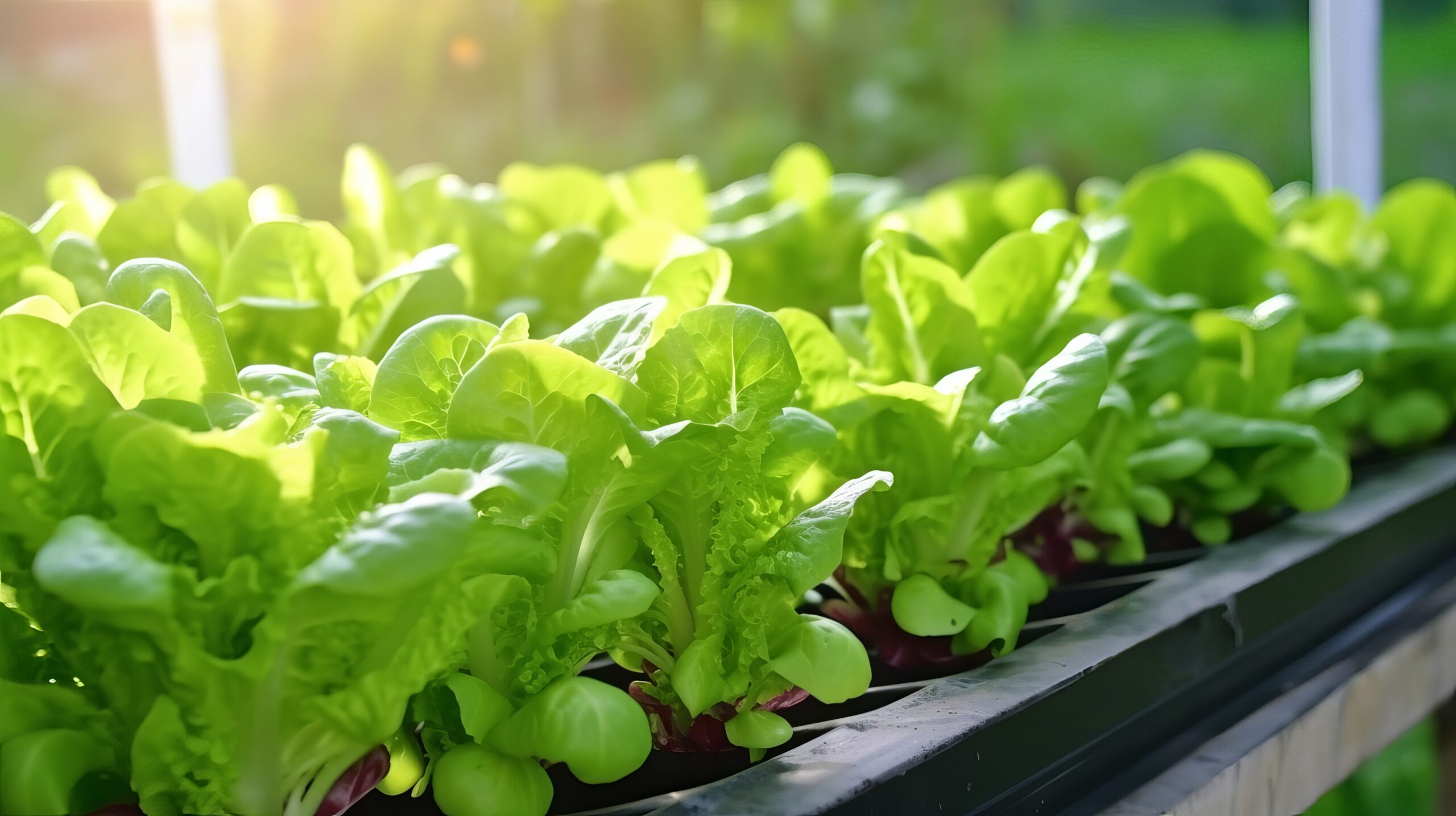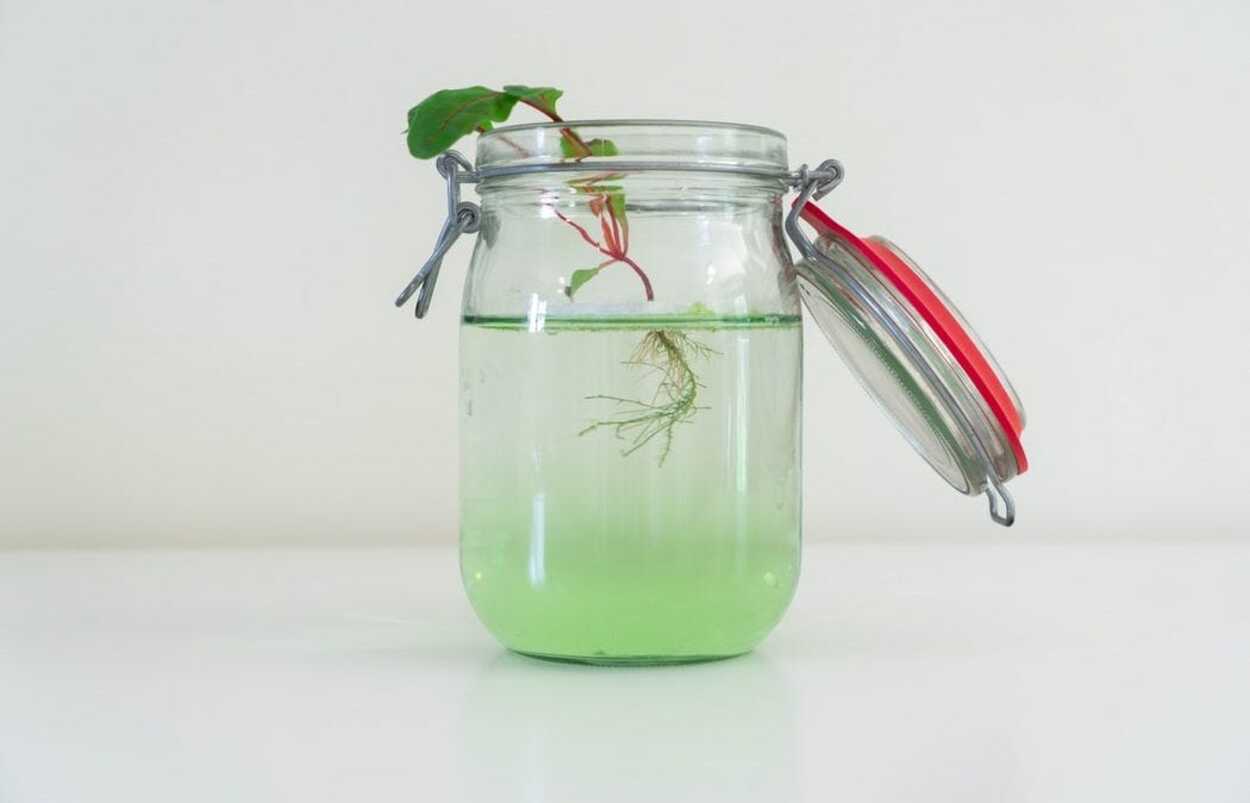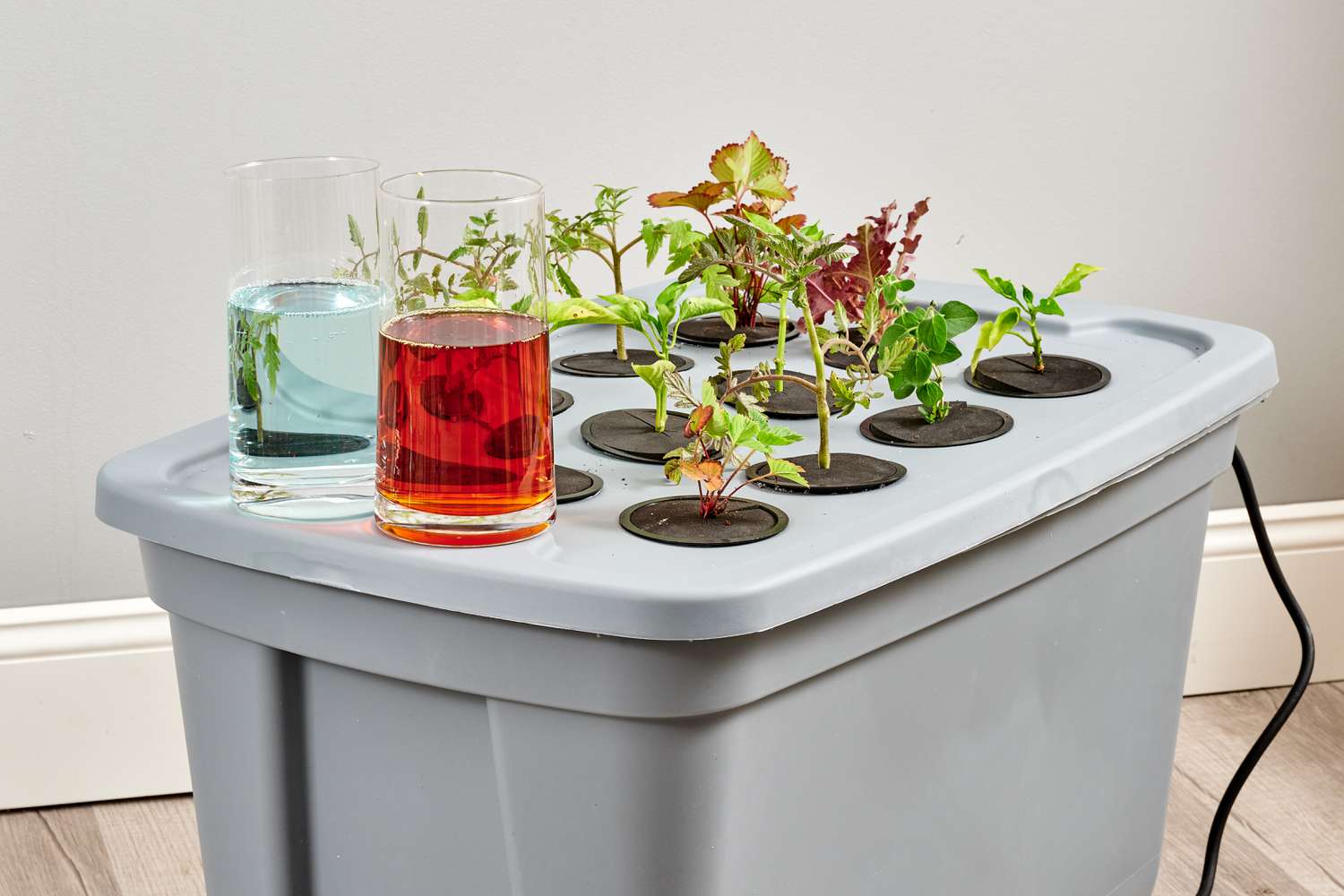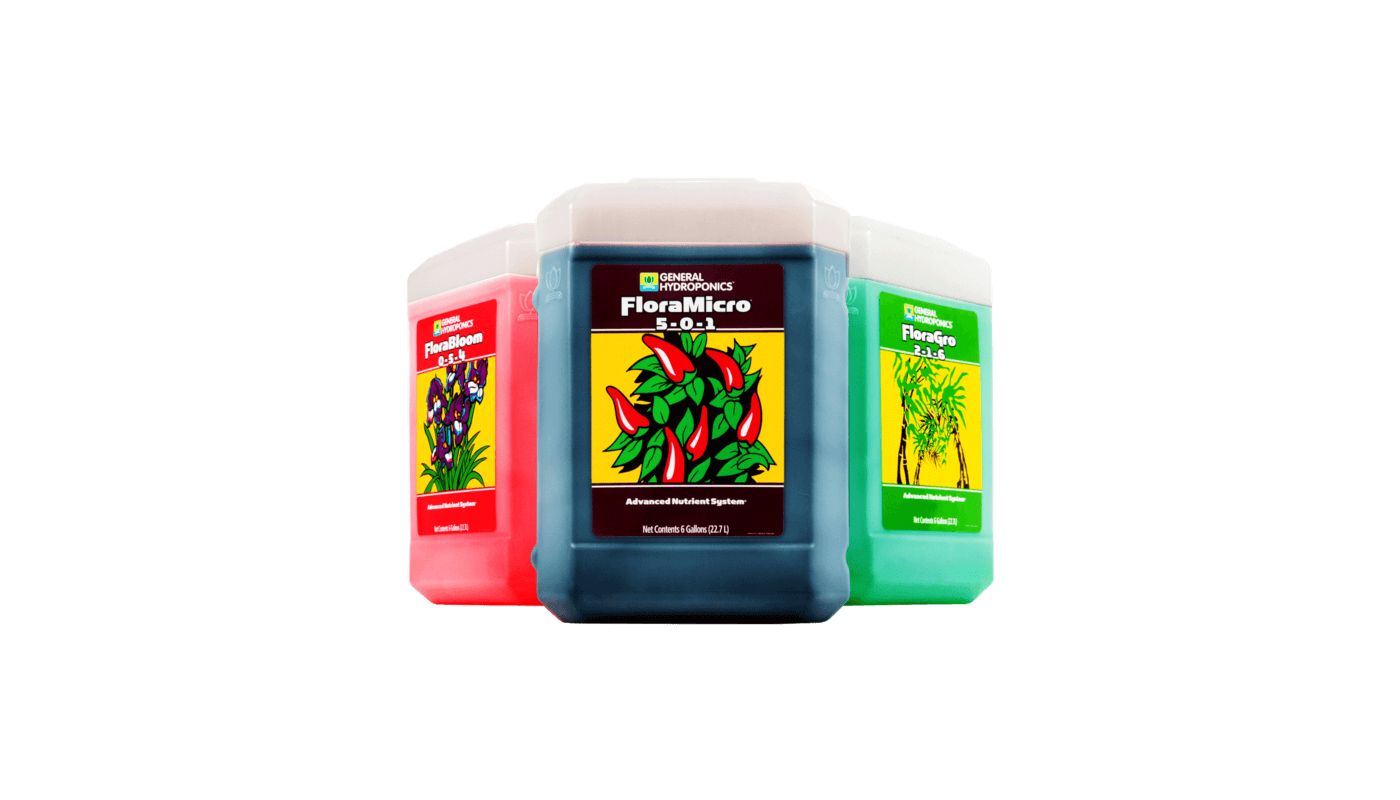Home>Gardening Tips and Tricks>Eco-Friendly Gardening>How Often To Add Nutrients To Hydroponics


Eco-Friendly Gardening
How Often To Add Nutrients To Hydroponics
Published: September 21, 2023
Looking for eco-friendly gardening tips? Learn how often to add nutrients to your hydroponics system for optimal plant growth and sustainability.
(Many of the links in this article redirect to a specific reviewed product. Your purchase of these products through affiliate links helps to generate commission for Chicagolandgardening.com, at no extra cost. Learn more)
Table of Contents
- Introduction
- Understanding the Nutrient Requirements in Hydroponics
- Factors Influencing Nutrient Uptake in Hydroponics
- Monitoring Nutrient Levels
- How Often to Add Nutrients in Hydroponics
- Importance of Maintaining pH and EC Levels
- Adjusting Nutrient Levels for Different Plant Stages
- Common Nutrient Deficiencies in Hydroponics
- Tips for Efficient Nutrient Management
- Conclusion
Introduction
Welcome to the world of hydroponics, the innovative and eco-friendly technique of growing plants without soil. As our understanding of sustainable gardening practices continues to evolve, hydroponics has emerged as a popular method for growing plants in a controlled and efficient manner. One of the key factors in successful hydroponic gardening is providing the right balance of nutrients to the plants.
In traditional soil gardening, plants extract nutrients from the soil. However, in hydroponics, the plants rely on nutrient-rich water solutions to thrive. By directly providing the essential elements in a readily available form, hydroponics allows for faster growth and higher yields compared to traditional gardening methods.
This article will guide you on how often to add nutrients in hydroponics, ensuring that your plants receive the optimal nutrition they need to flourish. We will explore the factors influencing nutrient uptake, discuss the importance of maintaining pH and EC levels, and provide tips for efficient nutrient management. By the end of this article, you will have a clear understanding of how to effectively nourish your hydroponic garden and maximize its potential.
Whether you are a beginner or an experienced hydroponics enthusiast, understanding the fundamentals of nutrient management is crucial for achieving successful results. Let’s dive into the fascinating world of hydroponics and discover the key to growing healthy and sustainable plants.
Understanding the Nutrient Requirements in Hydroponics
In hydroponics, plants rely on nutrient solutions to meet their nutritional needs. These solutions contain a balanced ratio of essential elements, including macronutrients (nitrogen, phosphorus, and potassium) and micronutrients (iron, manganese, zinc, etc.). Understanding the nutrient requirements of plants is vital to ensure their growth and development.
Plants need macronutrients in larger quantities compared to micronutrients. Nitrogen (N) plays a crucial role in promoting leaf and stem growth, while phosphorus (P) is essential for energy transfer and root development. Potassium (K) contributes to overall plant health and regulates water uptake.
Micronutrients, though needed in smaller quantities, are equally important. Iron (Fe) aids in chlorophyll production and helps plants carry out essential physiological processes. Manganese (Mn) is crucial for photosynthesis, and zinc (Zn) is involved in enzyme activation.
It is essential to provide the right balance of nutrients to the plants. However, each plant species may have specific requirements, and these can vary at different growth stages. Conducting research on the nutrient requirements of the plants you are growing will help you develop a suitable nutrient solution.
Additionally, it is important to note that different plants have different pH preferences for optimal nutrient uptake. For instance, most plants prefer a slightly acidic pH range of 5.5 to 6.5. However, some plants, such as blueberries, prefer a more acidic environment, while others, like lettuce, can tolerate a slightly higher pH. Adjusting the nutrient solution’s pH to suit the specific plants you are growing will maximize nutrient absorption.
By understanding the nutrient requirements of your plants and ensuring they are met through the nutrient solution, you can provide a supportive environment for healthy growth and achieve exceptional yields in your hydroponic garden.
Factors Influencing Nutrient Uptake in Hydroponics
In hydroponics, several factors can influence the uptake of nutrients by plants. Understanding these factors is crucial for maintaining optimal nutrient levels and ensuring the healthy growth of your hydroponic garden.
The first factor to consider is the root environment. In hydroponics, plants grow in a soilless medium, such as perlite or coco coir, or directly in nutrient-rich water. The root structure plays a critical role in nutrient absorption. Healthy, well-developed roots with plenty of root hairs have a larger surface area for nutrient uptake. Ensuring proper aeration of the root zone and providing adequate oxygen levels through techniques like oxygenation or air stones can optimize nutrient uptake.
The second factor is water quality. The purity and composition of the water used in hydroponics can affect nutrient availability. Water sources with high mineral content or impurities can lead to the accumulation of salts, which can hinder nutrient uptake by plants. It is recommended to use filtered or purified water to prevent any negative impact on plant growth.
Another crucial factor is the temperature of the nutrient solution. Plants have an optimal temperature range for nutrient absorption, usually ranging from 65°F to 75°F (18°C to 24°C). Extreme temperatures, either too hot or too cold, can negatively affect the plants’ ability to take up nutrients. Maintaining the nutrient solution at the appropriate temperature can promote efficient nutrient uptake and maximize plant growth.
The pH level of the nutrient solution is also a significant factor influencing nutrient availability. Different nutrients have different solubilities at different pH levels. Maintaining the pH within the ideal range for your specific plants ensures that the nutrients remain in a usable form. Regular monitoring and adjustment of pH levels are necessary to optimize nutrient uptake and prevent nutrient deficiencies or toxicities.
Lastly, the age and overall health of the plants can impact nutrient uptake. Young plants and newly transplanted ones may have underdeveloped root systems, making them more vulnerable to nutrient imbalances. It is important to provide a gradual increase in nutrient strength as the plants mature and develop stronger root systems.
By considering these factors and implementing appropriate measures to optimize nutrient uptake, you can create an ideal environment for the plants to thrive and achieve remarkable growth in your hydroponic garden.
Monitoring Nutrient Levels
Regularly monitoring nutrient levels is essential in hydroponics to ensure that plants receive the right amount of nutrients for optimal growth. By closely observing and maintaining nutrient levels, you can prevent deficiencies or toxicities and promote healthy plant development in your hydroponic system.
One of the key indicators of nutrient levels is electrical conductivity (EC), which measures the concentration of mineral ions in the nutrient solution. EC meters are commonly used to assess the strength of the nutrient solution. Monitoring the EC allows you to adjust the nutrient solution’s concentration to match the plants’ growth stage and requirements.
In addition to EC, pH levels should also be regularly monitored. pH meters are used to measure the acidity or alkalinity of the nutrient solution. Keeping pH within the optimal range ensures that essential nutrients remain soluble and available for uptake by the plants. Regular pH monitoring and adjustment are necessary to maintain a stable pH level and prevent nutrient imbalances.
Visual signs of nutrient deficiencies or toxicities can also be a helpful way to monitor nutrient levels. Yellowing or discoloration of leaves, stunted growth, or wilting can indicate nutrient deficiencies. Conversely, burnt or discolored leaf tips, brown spots, or stunted growth can point to nutrient toxicities. By closely observing the plants’ appearance, you can address nutrient imbalances promptly.
Regularly checking and recording nutrient levels and plant health will help you identify trends and make appropriate adjustments to the nutrient solution. Documenting any changes you make and their effects on the plants will allow you to optimize nutrient levels over time.
In addition to visual observation, you can also use nutrient testing kits or send samples to laboratories for detailed analysis. These tests provide accurate measurements of specific nutrient levels, helping you fine-tune your nutrient management strategy.
By monitoring nutrient levels through regular testing and observation, you can maintain a healthy balance of nutrients in your hydroponic system. This proactive approach ensures that your plants receive the necessary nourishment for thriving growth and bountiful harvests.
How Often to Add Nutrients in Hydroponics
One of the key considerations in hydroponics is determining how often to add nutrients to the system. Finding the right balance is crucial to ensure that plants receive a consistent supply of nutrients without risking nutrient deficiencies or toxicities.
There is no one-size-fits-all answer to this question, as the frequency of nutrient addition depends on various factors such as the plant species, growth stage, size of the plants, and environmental conditions. Generally, it is recommended to add nutrients to the hydroponic system every one to two weeks or when the EC levels drop below the desired range.
Regular monitoring of EC levels is essential to determine the optimal timing for nutrient addition. EC levels indicate the nutrient strength in the solution, and a decline in EC suggests that the plants have consumed the available nutrients. Monitoring EC allows you to adjust the nutrient solution and replenish the depleted nutrients in a timely manner.
In addition to EC levels, observing the overall health and growth of the plants can also provide valuable insights into the frequency of nutrient addition. If the plants are showing signs of nutrient deficiency, such as yellowing leaves or stunted growth, it may be necessary to increase the frequency of nutrient application.
It is important to note that overfeeding plants with excessive nutrients can be detrimental as it can lead to nutrient imbalances and cause nutrient toxicities. Care should be taken to provide the right amount of nutrients without overloading the plants. Adjusting the nutrient solution’s strength based on the plants’ growth stage and requirements is crucial for maintaining a healthy nutrient balance.
Another aspect to consider is the water absorption rate of the plants. Some plants, particularly those in their vegetative growth stage, have higher nutrient demands and may require more frequent nutrient applications. As the plants transition to the flowering or fruiting stage, their nutrient requirements may change, and adjustments to the nutrient solution’s strength and frequency of application may be necessary.
By closely monitoring the plants’ nutrient needs, observing their growth and health, and regularly testing the nutrient solution’s EC levels, you can determine how often to add nutrients in your hydroponic system. Striking the right balance will provide the plants with a consistent supply of nutrients, leading to robust growth, healthy development, and impressive yields.
Importance of Maintaining pH and EC Levels
Maintaining the proper pH and electrical conductivity (EC) levels in a hydroponic system is crucial for the overall health and success of your plants. pH and EC directly affect nutrient availability and uptake by the plants, making them key factors in achieving optimal growth and maximizing yields.
Firstly, pH levels play a vital role in nutrient absorption. Each nutrient has an optimal pH range in which it is most readily available for plant uptake. When the pH deviates from this range, nutrient availability can be affected, leading to nutrient deficiencies or toxicities.
A slightly acidic pH range of 5.5 to 6.5 is generally preferred by most plants in hydroponics. However, it is important to note that different plants may have specific pH preferences. For example, blueberries thrive in a more acidic environment, while lettuce can tolerate a slightly higher pH. By maintaining the appropriate pH range for your specific plants, you optimize nutrient solubility and absorption.
Secondly, EC measures the concentration of mineral ions in the nutrient solution. It reflects the overall strength of the nutrient solution and indicates the availability of nutrients for the plants. Monitoring EC levels enables you to adjust the nutrient solution’s concentration to match the plants’ growth stage and requirements.
Too low of an EC level indicates that the plants may not be receiving enough nutrients, which can lead to stunted growth and nutrient deficiencies. On the other hand, an excessively high EC level can result in nutrient imbalances and can be toxic to the plants.
Regularly monitoring and adjusting pH and EC levels ensure that plants have access to the right balance of essential nutrients. It allows you to fine-tune the nutrient solution, providing the optimal conditions for nutrient uptake and utilization.
Furthermore, maintaining proper pH and EC levels also influences the health of the root system. Roots are responsible for nutrient absorption, and they require a suitable environment to perform this function effectively. The correct pH and EC levels promote root development, enhance nutrient uptake efficiency, and prevent root diseases or rot that can occur in imbalanced environments.
By maintaining optimal pH and EC levels, you create an ideal growing environment for your hydroponic plants. This ensures that they receive the necessary nutrients in an accessible form, supporting healthy growth, vigorous development, and impressive yields.
Adjusting Nutrient Levels for Different Plant Stages
As plants progress through different growth stages in a hydroponic system, their nutrient requirements change. Adjusting nutrient levels accordingly is crucial to support their specific developmental needs and promote optimal growth. Here’s a guide on how to adapt nutrient levels for different plant stages in your hydroponic garden.
Seedling Stage: During the early seedling stage, plants have delicate and underdeveloped root systems. It is important to provide a mild nutrient solution to avoid overwhelming the young plants. Start with a lower concentration of nutrients, gradually increasing it as the seedlings establish stronger roots.
Vegetative Stage: In the vegetative stage, the focus is on promoting robust leaf and stem growth. The nutrient solution should provide an ample supply of nitrogen (N) to support vegetative development. Increase the overall nutrient concentration, keeping a balanced ratio of macronutrients and micronutrients to ensure healthy growth.
Flowering/Fruiting Stage: As plants enter the flowering or fruiting stage, their nutrient requirements shift. At this stage, plants need a higher concentration of phosphorus (P) and potassium (K) to promote flower and fruit production. Reduce the nitrogen (N) levels to encourage the redistribution of energy towards flowering and fruiting. Adjust the nutrient solution with a higher PK ratio to meet the plants’ changing needs.
Ripening Stage: During the ripening stage, as fruits mature and approach harvest, nutrient levels should gradually decline. Lower nutrient concentrations and adjust the solution’s pH to discourage excessive vegetative growth and promote the ripening of fruits.
It is important to note that each plant species may have specific nutrient requirements and growth patterns. Researching the specific needs of the plants you are growing will help you fine-tune nutrient levels accordingly. Additionally, environmental factors such as temperature, humidity, and lighting intensity can also influence nutrient uptake and requirements. Monitor and adjust nutrient levels based on the plant’s response and growth patterns.
Regularly check the pH and electrical conductivity (EC) levels to ensure adequate nutrient availability. Adjust the pH to keep it within the preferred range for your plants and monitor the EC to maintain suitable nutrient concentrations.
By adjusting nutrient levels to match the different stages of plant growth, you provide the optimal nourishment for your hydroponic plants. This targeted approach supports healthy development, maximizes yields, and ensures the overall success of your hydroponic gardening endeavors.
Common Nutrient Deficiencies in Hydroponics
While hydroponics provides precise control over nutrient delivery, nutrient deficiencies can still occur if the nutrient solution is not properly balanced or if the plants are not able to absorb nutrients effectively. By understanding the common nutrient deficiencies in hydroponics, you can identify and address these issues promptly to ensure the health and vitality of your plants.
Nitrogen (N) Deficiency: Nitrogen deficiency is characterized by slow and stunted growth, yellowing leaves (starting from the oldest leaves), and reduced overall vigor. Nitrogen is essential for leaf and stem development and plays a crucial role in chlorophyll production. Increase the nitrogen concentration in the nutrient solution to alleviate nitrogen deficiency symptoms.
Phosphorus (P) Deficiency: Phosphorus deficiency leads to stunted growth, darkening of leaves, and purplish discoloration on stems and undersides of leaves. Phosphorus is vital for energy transfer and root development. Adjust the nutrient solution to provide a higher phosphorus concentration to resolve phosphorus deficiency.
Potassium (K) Deficiency: Potassium deficiency manifests as yellowing, curling, and scorched leaf margins. Potassium plays a key role in maintaining overall plant health, regulating water uptake, and supporting essential physiological processes. Increase the potassium concentration in the nutrient solution to combat potassium deficiency.
Iron (Fe) Deficiency: Iron deficiency presents as yellowing between the leaf veins (interveinal chlorosis), while the veins remain green. Iron is essential for chlorophyll production and various enzymatic reactions. Adjusting the pH of the nutrient solution to the appropriate range and providing iron chelates can help alleviate iron deficiency symptoms.
Calcium (Ca) Deficiency: Calcium deficiency results in stunted growth, yellowing of new leaves, and weak stem development. Calcium is crucial for cell wall development and structural integrity. Check the calcium concentration in the nutrient solution and adjust as needed to combat calcium deficiency.
Magnesium (Mg) Deficiency: Magnesium deficiency causes yellowing between leaf veins (interveinal chlorosis), particularly in older leaves. Magnesium is a central component of chlorophyll and is involved in countless metabolic processes. Adjust the magnesium concentration in the nutrient solution to address magnesium deficiency.
Zinc (Zn) Deficiency: Zinc deficiency leads to stunted growth, distorted or undersized leaves, and interveinal yellowing. Zinc is essential for enzyme activation and overall plant development. Adjust the nutrient solution to provide sufficient zinc to alleviate zinc deficiency symptoms.
Regularly monitor the health and appearance of your plants for any signs of nutrient deficiencies. Adjust the nutrient solution’s composition and concentration, ensuring a balanced supply of essential nutrients. It’s important to note that nutrient deficiencies can be interrelated, so maintaining overall nutrient balance is crucial for addressing and preventing deficiencies.
By promptly identifying and addressing nutrient deficiencies in your hydroponic system, you can ensure that your plants receive the optimal nutrition they need to thrive and produce abundant, healthy yields.
Tips for Efficient Nutrient Management
Efficient nutrient management is key to successful hydroponic gardening. By implementing effective strategies, you can optimize nutrient uptake, prevent deficiencies or toxicities, and maximize the health and productivity of your plants. Here are some tips to help you efficiently manage nutrients in your hydroponic system:
1. Conduct Regular pH and EC Monitoring: Regularly monitor the pH and electrical conductivity (EC) levels of your nutrient solution. pH levels affect nutrient availability, while EC indicates nutrient concentration. Adjust these levels as needed to maintain optimal conditions for nutrient absorption.
2. Use High-Quality Water Sources: The quality of water used in hydroponics significantly impacts nutrient availability. Use filtered or purified water to minimize the risk of impurities that can lead to nutrient imbalances or nutrient lockout.
3. Follow Nutrient Solution Recipes: Stick to recommended nutrient solution recipes or follow the instructions provided by the manufacturer. These recipes provide the appropriate balance of macronutrients and micronutrients for specific plant species and growth stages.
4. Adjust Nutrient Strength as Plants Grow: As plants progress through different growth stages, their nutrient requirements change. Adjust the nutrient strength to accommodate their evolving needs. Start with lower concentrations for young plants and gradually increase as they grow and develop stronger root systems.
5. Properly Clean and Maintain Equipment: Regularly clean and maintain your hydroponic system, including reservoirs, pumps, and tubing. This helps prevent the buildup of algae or mineral deposits, ensuring optimal nutrient delivery and reducing the risk of clogs or blockages.
6. Implement a Regular Nutrient Change Schedule: Consider changing the nutrient solution every one to two weeks. This prevents nutrient imbalances and ensures a fresh supply of nutrients for the plants. Drain and refresh the system while properly cleaning and sanitizing it before adding a new nutrient solution.
7. Adjust Nutrient Solution for Environmental Conditions: Environmental factors such as temperature, humidity, and lighting can influence nutrient uptake. Adjust nutrient levels accordingly to meet the plants’ requirements under specific environmental conditions.
8. Keep Detailed Records: Maintain a record of nutrient concentrations, pH levels, EC readings, and any adjustments made. This helps in tracking the success of nutrient management strategies, identifying trends, and making informed decisions for future nutrient adjustments.
9. Monitor Plant Health and Growth: Regularly observe the health and growth of your plants. Watch for any signs of nutrient deficiencies or toxicities. Adjust nutrient levels based on plant response, ensuring healthy growth and optimal nutrient uptake.
10. Seek Expert Advice: If you encounter persistent nutrient-related issues or are unsure about nutrient management in your hydroponic system, don’t hesitate to seek advice from experienced hydroponic gardeners or professionals. They can provide guidance tailored to your specific needs and help resolve any challenges you may face.
By implementing these tips and maintaining a proactive approach to nutrient management, you can achieve efficient nutrient delivery, resulting in robust plant growth, vibrant foliage, and abundant yields in your hydroponic garden.
Conclusion
Hydroponics offers an innovative and eco-friendly way to cultivate plants without the use of soil. Efficient nutrient management is a key factor in achieving successful and thriving hydroponic gardens. By understanding the nutrient requirements of plants, monitoring pH and EC levels, and adjusting nutrient levels for different growth stages, you can provide the optimal nutrition needed for healthy and productive plants.
Regular monitoring of pH and EC levels allows for prompt adjustments, ensuring that the nutrient solution remains in the ideal range for absorption. By maintaining the appropriate nutrient balance, you can prevent nutrient deficiencies or toxicities that can impede plant growth and development.
Recognizing common nutrient deficiencies and their symptoms helps you detect and address these issues proactively. Adjusting nutrient strength, using high-quality water sources, and adhering to nutrient solution recipes contribute to efficient nutrient management.
It is also important to regularly clean and maintain your hydroponic system, keep detailed records of nutrient levels and plant health, and adjust nutrient levels based on environmental conditions and the plants’ response.
Efficient nutrient management ensures that your hydroponic plants receive the optimal nutrients they need. This leads to vigorous growth, robust development, and bountiful yields in your hydroponic garden.
By following the tips and guidelines provided in this article, you will be well-equipped to manage nutrients effectively and achieve outstanding results in your hydroponic gardening endeavors.
